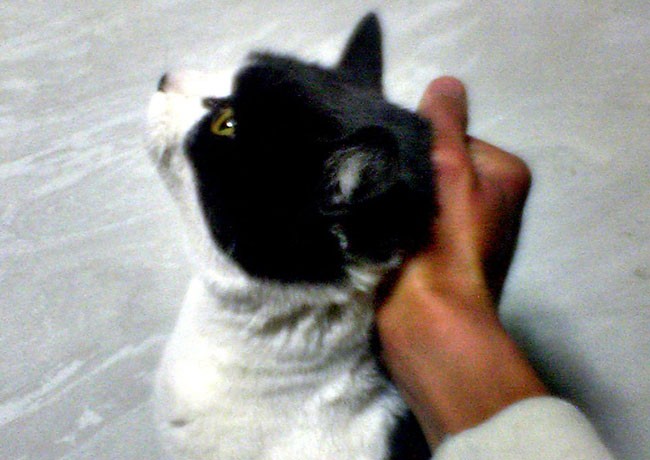How well we know our patients helps us handle them with the minimum amount of stress – but a few recent incidents have had me thinking about how well we really know cats.
Head tapping

Throughout my years in nursing, I’ve often seen people “head tapping” cats when they’re being restrained. I think the theory behind it is that it distracts the cat from what you are doing, but I’ve always thought it just causes pain and makes the cat tense up even more, making any attempt at hitting a vein much harder.
There is good evidence to support NOT using head tapping.
For example, the AAFP and ISFM Feline-Friendly Nursing Care Guidelines – published in the Journal of Feline Medicine and Surgery – claim “physical correction such as tapping the cat’s head and delivering stern vocal corrections may startle the cat and provoke the fight-or-flight response”.
Page 347 of the article covers head tapping, general handling and verbal triggers for cats. The article also covers many aspects of feline care and includes a number of great suggestions for how to implement them.
One practice I worked in bought plastic trugs from a DIY store. They turned them upside down, cut the handles off and cut out a door. They were easy to clean and offered a great hiding space.
Scruffing
Scruffing is also an area of contention – although I’ve found that less and less practices are scruffing routinely, which is great. When teaching I always advise students to ask the practice’s policy on cat handling before getting involved: observe their work and ensure you work within their guidelines.
What has been interesting is that a lot of overseas students claim to have seen scruffing used as the routine approach to handling cats, so it might be something to be aware of in practice. As we see overseas vets and nurses arrive, we need to ensure they are aware of feline handling needs.
The article Breaking the myth on cat scruffing by cat behaviour expert Anita Kelsey is great – short and succinct and easy to explain.
Sadly if people Google the phrase “cat scruffing”, the video below is returns as one of the top results (I haven’t been able to watch the whole six minutes as the first three minutes are bad enough).
Sadly, Dr Christianne Schelling actually advocates using scruffing to correct bad behaviour. How ever will the public learn how to safely handle their cats while this is around?
Nose tapping
The final bugbear I have is nose tapping. I had a cat that was rehomed with me as he wouldn’t settle in his new home after I fostered him. Pure white and about 17 years old, he had been a joy to foster – loving, outgoing, an amazing character. He loved sitting on your lap, and If you tried to move too soon he yowled in your face. It was like a lamb bleating.
Yet in his new home he was frightened. He hid under furniture and wasn’t willing to be handled.
On discussion with the owner it turned out he had yowled at her. But instead of just gently moving him off her lap, she tapped his nose to reprimand him. She was also carrying him around like a handbag without supporting his hind legs, which can be scary for any cat. It appeared they just weren’t providing the basics of a happy cat household.
I spoke to a behaviourist about him as I was worried he wouldn’t settle back with us. She was horrified by the nose tapping and believed this had triggered a lot of the behaviours they had seen. Luckily, he settled back in with us immediately and lived a lovely, happy life.
So, to conclude, please consider your cat handling in consult and as an inpatient. Small changes can make a huge difference to our feline friends.

Leave a Reply